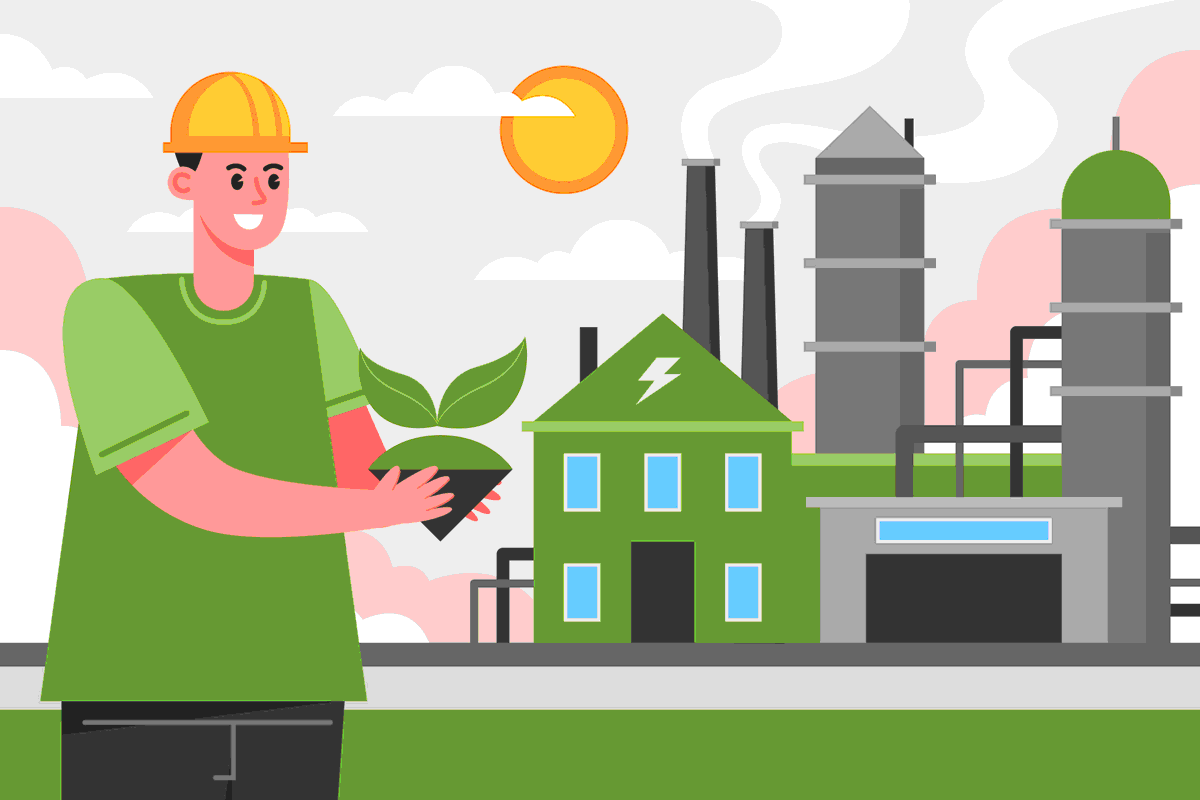
Enhancing Quality of Life with Green Buildings: Benefits, Innovations, and Case Studies
Sustainable architecture and green buildings are gaining popularity as people become more aware of the impact of their actions on the environment and their health. This article aims to explore the benefits of sustainable architecture and green buildings on human well-being, productivity, and the environment.
What are Green Buildings and Sustainable Architecture?
Green buildings are structures that are designed, built, and operated with environmental sustainability in mind. They are energy-efficient, use renewable resources, and minimize waste and environmental impact. Sustainable architecture, on the other hand, is the practice of designing buildings that meet the needs of the present without compromising the ability of future generations to meet their own needs.
The Benefits of Green Buildings on Human Health and Productivity
Green buildings have been shown to have numerous benefits on human health and productivity. They can improve indoor air quality by reducing the levels of pollutants and providing better ventilation systems. According to the World Green Building Council, green buildings can improve productivity by up to 11% and reduce absenteeism by up to 28%.
Moreover, eco-friendly structures can improve human comfort by providing better thermal conditions, natural light, and noise reduction. The impact of natural light on human health and productivity has been extensively studied. Natural light can improve mood, reduce stress, and enhance cognitive performance. Similarly, noise reduction in green buildings can improve the occupant's quality of life by reducing stress and improving concentration.
The Impact of Sustainable Architecture on the Environment and Community
Green buildings and sustainable architecture not only benefit human health and productivity but also contribute to a healthier environment and community. Eco-friendly buildings reduce energy consumption, greenhouse gas emissions, and waste generation, thereby reducing the environmental impact of buildings.
Moreover, sustainable architecture can also benefit the community by creating green spaces and improving the quality of life for the people in the surrounding area. For instance, green roofs and walls can provide urban green spaces and mitigate the urban heat island effect, which can have a positive impact on the community's health and well-being.
Energy Efficiency and Cost Savings in Sustainable Buildings
Green buildings are not only good for the environment and human health but also offer financial benefits. Sustainable buildings use less energy, and therefore, have lower energy bills. They also require less maintenance and have longer lifetimes, resulting in cost savings in the long run.
Furthermore, governments and organizations around the world offer incentives and subsidies for sustainable buildings, making them more financially attractive for building owners and developers.
Case Studies of Successful Green Building Projects and their Positive Impact on Communities
Numerous green building projects around the world have demonstrated the positive impact of sustainable architecture on human health, productivity, and the environment. The Bullitt Center in Seattle, Washington, is a net-zero energy, six-story commercial office building that uses rainwater harvesting and composting toilets to achieve a Living Building Challenge certification. It has been shown to use 90% less energy than a typical commercial office building. The building's design and operation have had a positive impact on the surrounding community by providing green spaces, reducing energy consumption, and improving air and water quality.
The Edge in Amsterdam, Netherlands, is another example of a successful green building project. It is a highly sustainable office building that has achieved the highest Building Research Establishment Environmental Assessment Method (BREEAM) rating, making it one of the most sustainable buildings in the world. The building's design includes innovative features such as a smart lighting system, an energy-efficient HVAC system, and a rainwater collection system, resulting in a significant reduction in energy consumption and environmental impact.
Latest Developments and Innovations in Sustainable Architecture and their Potential Benefits
Sustainable architecture is an ever-evolving field, and new developments and innovations are constantly emerging. One of the latest developments in sustainable architecture is the use of biophilic design , which seeks to connect occupants with nature by incorporating natural elements, such as plants and water features, into building design. This approach has been shown to improve mental health and well-being, as well as increase productivity and creativity.
Another innovation in sustainable architecture is the use of green roofs, which involve planting vegetation on a building's roof. Green roofs can help reduce urban heat island effects and improve air quality by absorbing pollutants. They can also help reduce energy costs by providing insulation and reducing the need for air conditioning.
In addition to these innovative design strategies, there are also numerous benefits to be gained from sustainable architecture in terms of cost savings and energy efficiency. By using energy-efficient technologies and materials, sustainable buildings can reduce energy consumption and costs over the long term. In fact, the World Green Building Council estimates that green buildings can save up to 30% on energy costs compared to traditional buildings.
Furthermore, sustainable buildings often have higher property values and are more attractive to potential buyers and renters. A study conducted by the University of California, Berkeley found that green-certified buildings had a rental premium of 5.6% and a sale premium of 16.1% compared to similar non-certified buildings.
Case studies of successful green building projects also demonstrate the positive impact that sustainable architecture can have on communities. For example, the Bullitt Center in Seattle, Washington, is a net-zero energy, six-story commercial office building that uses rainwater harvesting and composting toilets to achieve a Living Building Challenge certification. The building has been shown to use 90% less energy than a typical commercial office building and has become a model for sustainable design around the world.
Conclusion
In conclusion, sustainable architecture and green buildings have numerous benefits for both occupants and the environment. From improving indoor air quality and thermal comfort to reducing energy costs and enhancing community well-being, the advantages of eco-friendly design are clear. As the field of sustainable architecture continues to evolve and innovate, it offers a promising future for creating healthier, more sustainable living and working environments.
Environment and Ecology


